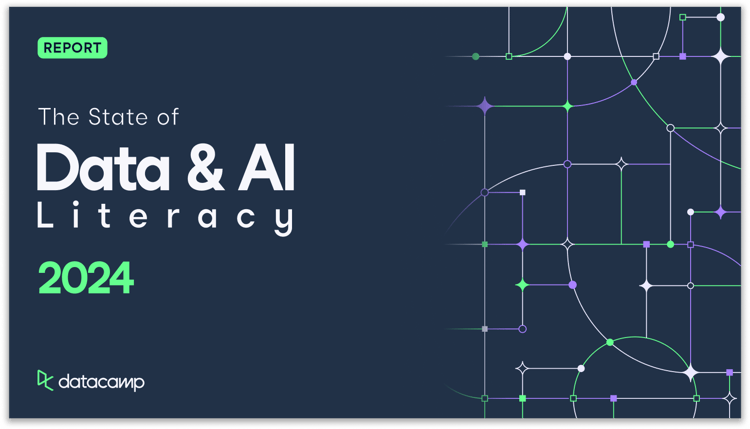Data literacy has become increasingly crucial for both individuals and organizations, allowing them to make better, data-driven decisions. The State of Data Literacy Report 2023 sheds light on the importance of data literacy, the transformational impact it can have, and the challenges faced by organizations in closing the data literacy skill gap. In this blog post, we will analyze key insights from the report and discuss the significance of data literacy in the modern workplace.
What is Data Literacy, and Why Does it Matter?
Data literacy is the ability to read, write, analyze, communicate, and reason with data. It's not a binary concept but rather a spectrum of fluency that ranges from basic data-driven decision-making to more advanced data science, data engineering, and machine learning skills.
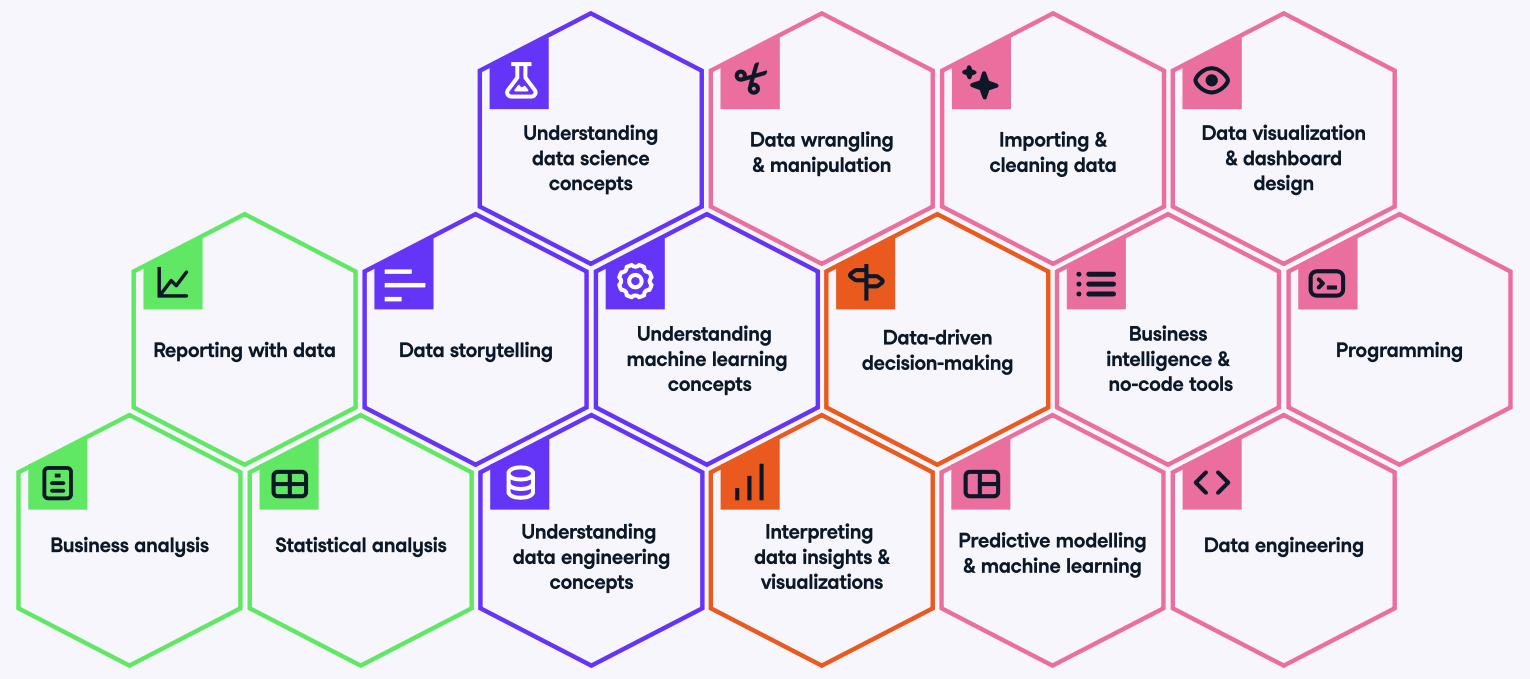
As highlighted in the report, both individuals and businesses recognize the importance of building their data capabilities. For example, in the UK, 89% of surveyed leaders consider basic data literacy skills the most critical skill for their workforce's day-to-day tasks. Similarly, in the US, 78% of leaders believe basic data literacy skills to be the most important skill set for their employees' daily tasks.
Download the State of Data & AI Literacy Report 2024
Uncover what 550+ leaders in the US & UK believe about the state of their teams’ data & AI skills.
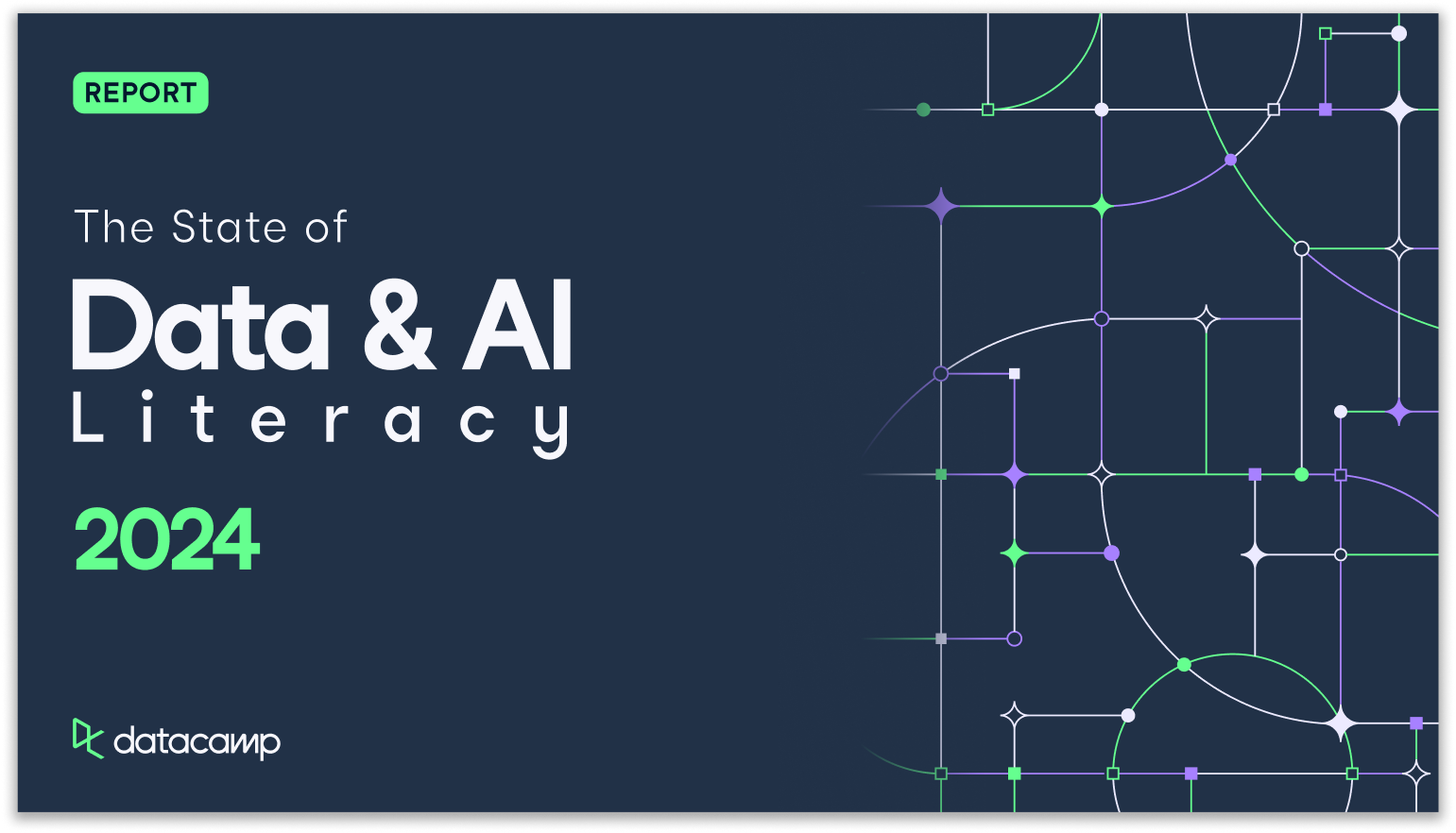
Why Data Literacy Has Become a Top Skill for Business Leaders and Their Teams
Organizations across industries are witnessing the impact of a data-savvy workforce. As a result, they are exhibiting gains in their ability to innovate, make faster and more informed decisions, create better customer experiences, and more. In this section, we will explore the transformational impact of data literacy in more detail.
Data Skills are Essential for Modern Organizations to Thrive
When asked about the risks of their department or team lacking adequate data skills, 41% of US and UK respondents identified inaccurate decision-making as the number one risk. Slow decision-making (36%), decreased productivity (30%), and a lack of innovation (29%) were also major concerns for respondents.
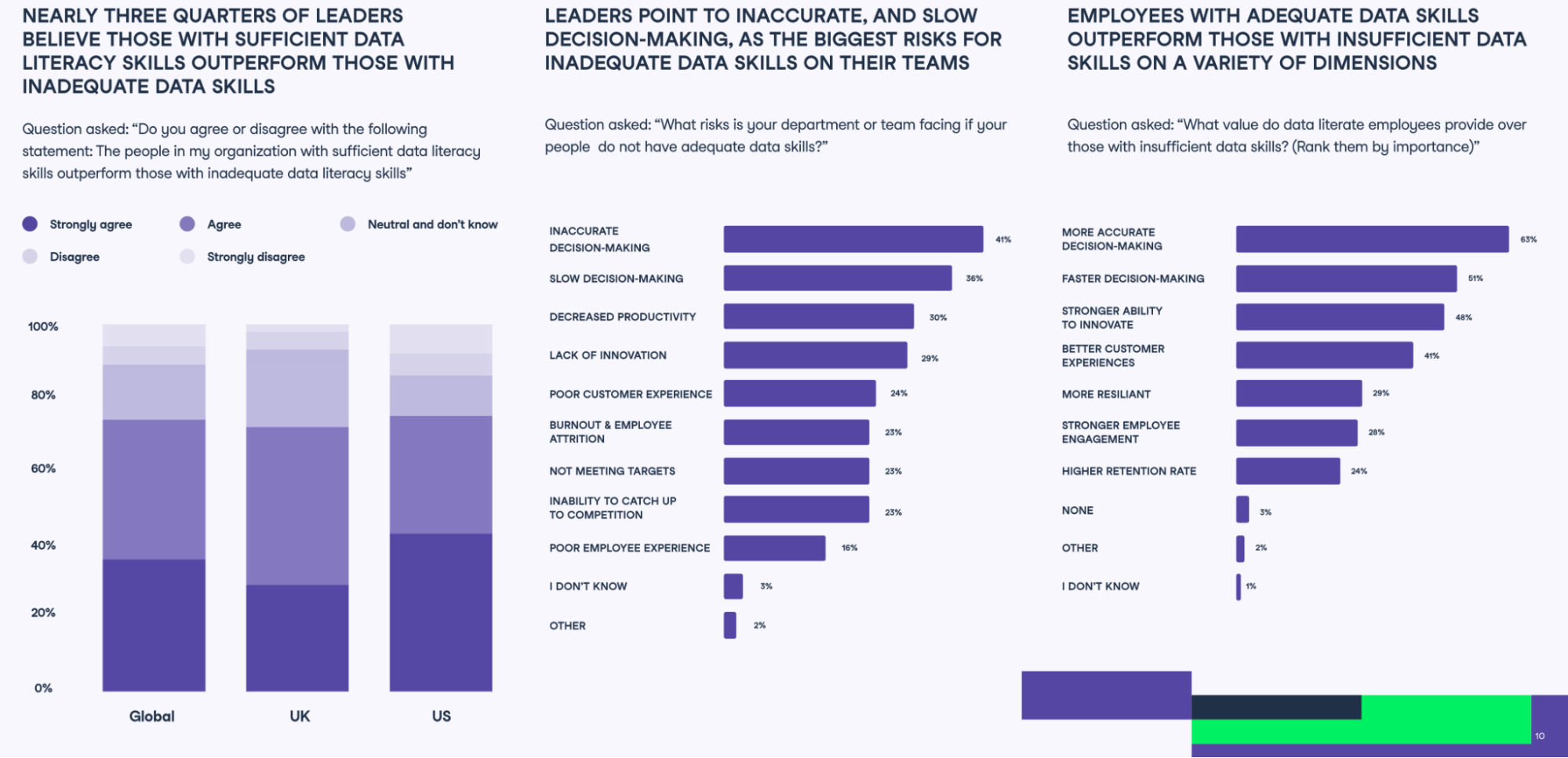
The Value of Data-Literate Employees
Nearly three-quarters (74%) of respondents agreed or strongly agreed that those with data literacy skills outperformed those with inadequate data skills. Leaders attributed more accurate decision-making (63%), stronger ability to innovate (48%), and the ability to create better customer experiences (41%) as some of the main value-added by data-literate employees.
Data Skills and Society's Biggest Challenges
Data literacy can have a broader impact beyond individual organizations. For example, 67% of data and business leaders believe that organizations that invest in data upskilling are more likely to be recession-proof.
Similarly, 85% felt that countries investing in data literacy skills will outperform those who are not. These responses signal the importance of the data skills economy in determining winners and losers in the coming decade.
The Data Literacy Skill Gap
Despite recognizing the transformational impacts of a data-literate workforce, a large data skills gap still needs to be addressed. This skill gap is born from technological, organizational, and cultural factors.
Assessing the Data Literacy Skill Gap
More than half of the leaders surveyed stated that their organization has a data literacy skill gap that needs to be addressed. This proportion corroborates DataCamp's data maturity assessment, which finds that only around 5% of organizations classify themselves as fully data literate.
Catalysts Behind the Skill Gap
Several factors contribute to the data skill gap, including the speed of data proliferation, misguided investments in technology over people, and the slow-moving nature of change management.
1. The speed of data proliferation
The rapid growth of big data has historically led organizations down the wrong investment path. In an effort to react quickly to the advent of big data, organizations invested in technology over people, falling into the trap of buying 'shiny toys.'
2. Misguided investments in technology
Prioritizing AI and machine learning projects has led organizations to focus on buzz-inducing predictive analytics use cases that require specialized talents such as data scientists and machine learning engineers. While these projects have their place, this approach doesn't necessarily translate into a data-driven workforce, as the wider organization should focus on descriptive and diagnostic analytics.
3. The slow-moving nature of change management
Building a data literacy program that gains widespread adoption and truly impacts the organization's skill set is a long-term project. It consists of continuous upskilling and reinforcement, culture change, gaining buy-in from participants and executives, and transforming organizational habits.
Addressing the Skill Gap: Hiring vs. Upskilling
Approximately two-thirds (66%) of leaders stated that they would be willing to pay a higher salary to a candidate with good data literacy skills over a candidate without them, with 77% of those who said yes claiming they would pay at least 10% to 15% extra. Roughly a quarter of leaders would offer a 30% salary premium or more for candidates with good data literacy skills.
While sourcing and hiring candidates with data skills can partly solve the data skill gap, change management, skills development, and culture transformation are paramount in shifting the organization's data culture. In the next section, we will explore best practices for implementing data literacy programs to upskill your organization from within.*
Implementing Effective Data Literacy Programs To Close the Data Skills Gap
Drawing from the experiences of DataCamp for Business customers, here are some best practices on how to effectively orchestrate change management and implement successful data literacy programs:
- Define clear goals and objectives: Establish a well-defined roadmap with specific goals and objectives for the data literacy program.
- Identify skill gaps and prioritize learning: Assess the current data literacy level within the organization and identify skill gaps. Prioritize learning based on the organization's goals and employee needs.
- Choose the right tools and platforms: Invest in tools and platforms that facilitate learning and upskilling. Consider solutions that offer a mix of self-paced, instructor-led, and collaborative learning experiences.
- Promote a data-driven culture: Encourage a data-driven mindset and create a culture that values data literacy. Offer incentives and recognition to employees who actively participate in the program and demonstrate improvement in their data skills.
- Monitor progress and iterate: Regularly monitor the progress of the data literacy program and measure its success against predefined goals. Make adjustments and improvements based on feedback and data.
To learn more about overcoming the challenges in data upskilling, check out our separate blog post dealing with some top tips for organizations and business leaders.
Empower Your Team with Data Literacy
Enhance your team's data literacy and decision-making capabilities with DataCamp for Business. Access diverse courses, hands-on projects, and centralized insights for teams of 2 or more.
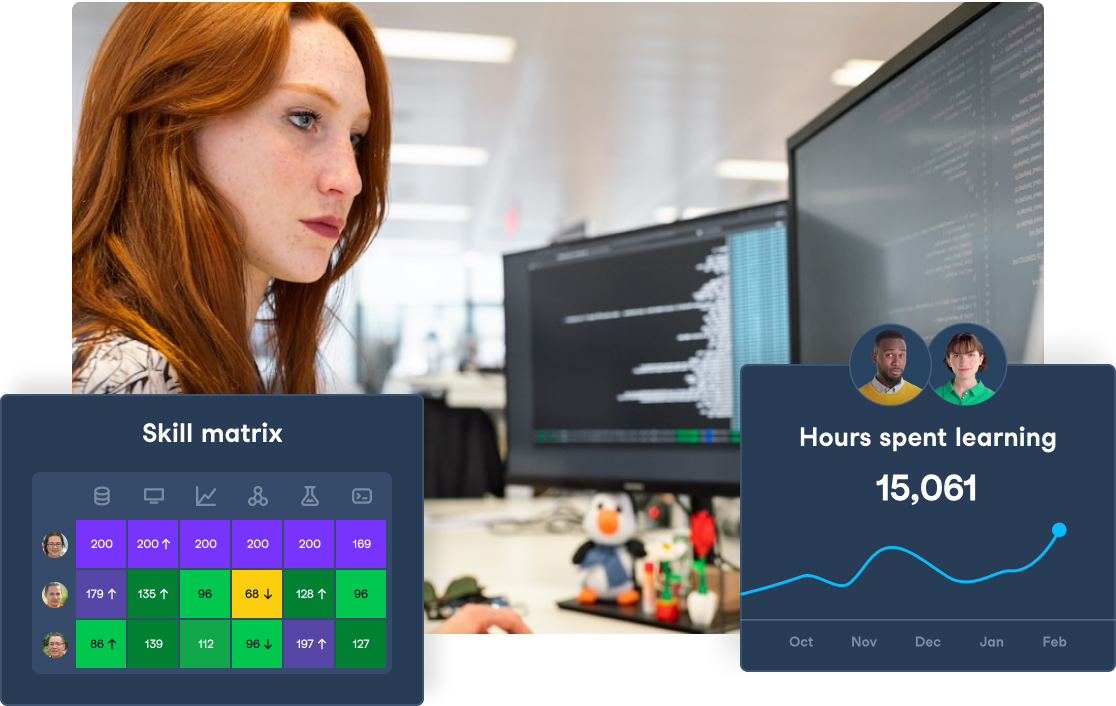
Final Thoughts
The State of Data Literacy 2023 Report underscores the growing importance of data literacy in the modern workplace. Organizations must address the existing data literacy skill gap by investing in upskilling programs, fostering a data-driven culture, and adopting best practices in change management. By doing so, they can harness the transformational impact of data and AI literacy and thrive in an increasingly competitive landscape.
Training 2 or more people? Check out our Business solutions
Get your team access to the full DataCamp library, with centralized reporting, assignments, projects and more


